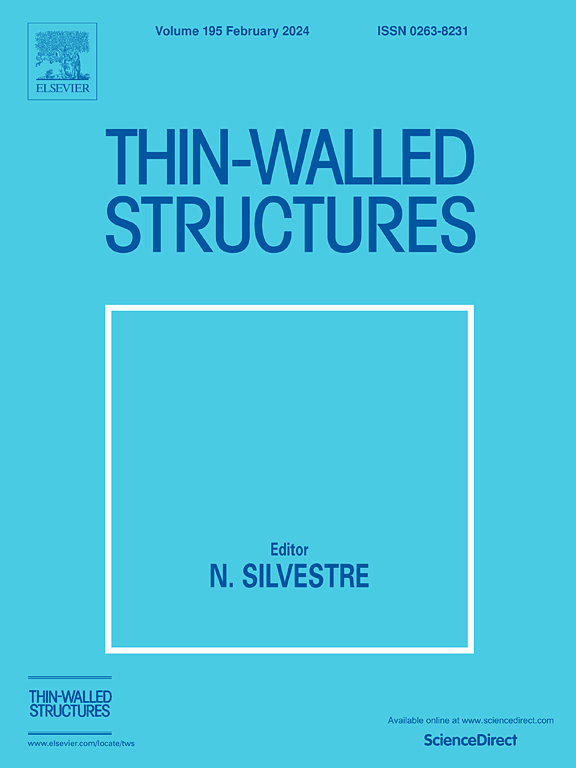Dynamic analysis of the uncoiling process of multiple tape springs
IF 5.7
1区 工程技术
Q1 ENGINEERING, CIVIL
引用次数: 0
Abstract
Tape springs are fundamental deployable components critical to the functionality of deployable space structures, achieving a high ratio of retraction and deployment through coiling and uncoiling mechanisms. This paper investigates the dynamic uncoiling of multiple tape springs coiled around a central hub. Accounting for the superposition of the thickness of the coiled part due to the number of tape springs and coil turns, the longitudinal section shape of the coiled part is approximated as an Archimedean spiral, and the theoretical model for the uncoiling process is established. The angular velocity and deployment time of the tape springs, along with their reaction torque on the central hub during uncoiling, are derived using the Lagrange equation. A finite element model is created using commercial software ABAQUS to simulate the dynamic uncoiling of the tape springs. Additionally, experiments are conducted utilizing a specially designed uncoiling setup within a vacuum test chamber, complemented by a high-speed image recording and processing system. Comparisons across theoretical, numerical, and experimental methods reveal strong agreement, thereby validating the accuracy of the proposed theoretical model.
求助全文
约1分钟内获得全文
求助全文
来源期刊

Thin-Walled Structures
工程技术-工程:土木
CiteScore
9.60
自引率
20.30%
发文量
801
审稿时长
66 days
期刊介绍:
Thin-walled structures comprises an important and growing proportion of engineering construction with areas of application becoming increasingly diverse, ranging from aircraft, bridges, ships and oil rigs to storage vessels, industrial buildings and warehouses.
Many factors, including cost and weight economy, new materials and processes and the growth of powerful methods of analysis have contributed to this growth, and led to the need for a journal which concentrates specifically on structures in which problems arise due to the thinness of the walls. This field includes cold– formed sections, plate and shell structures, reinforced plastics structures and aluminium structures, and is of importance in many branches of engineering.
The primary criterion for consideration of papers in Thin–Walled Structures is that they must be concerned with thin–walled structures or the basic problems inherent in thin–walled structures. Provided this criterion is satisfied no restriction is placed on the type of construction, material or field of application. Papers on theory, experiment, design, etc., are published and it is expected that many papers will contain aspects of all three.
 求助内容:
求助内容: 应助结果提醒方式:
应助结果提醒方式:


